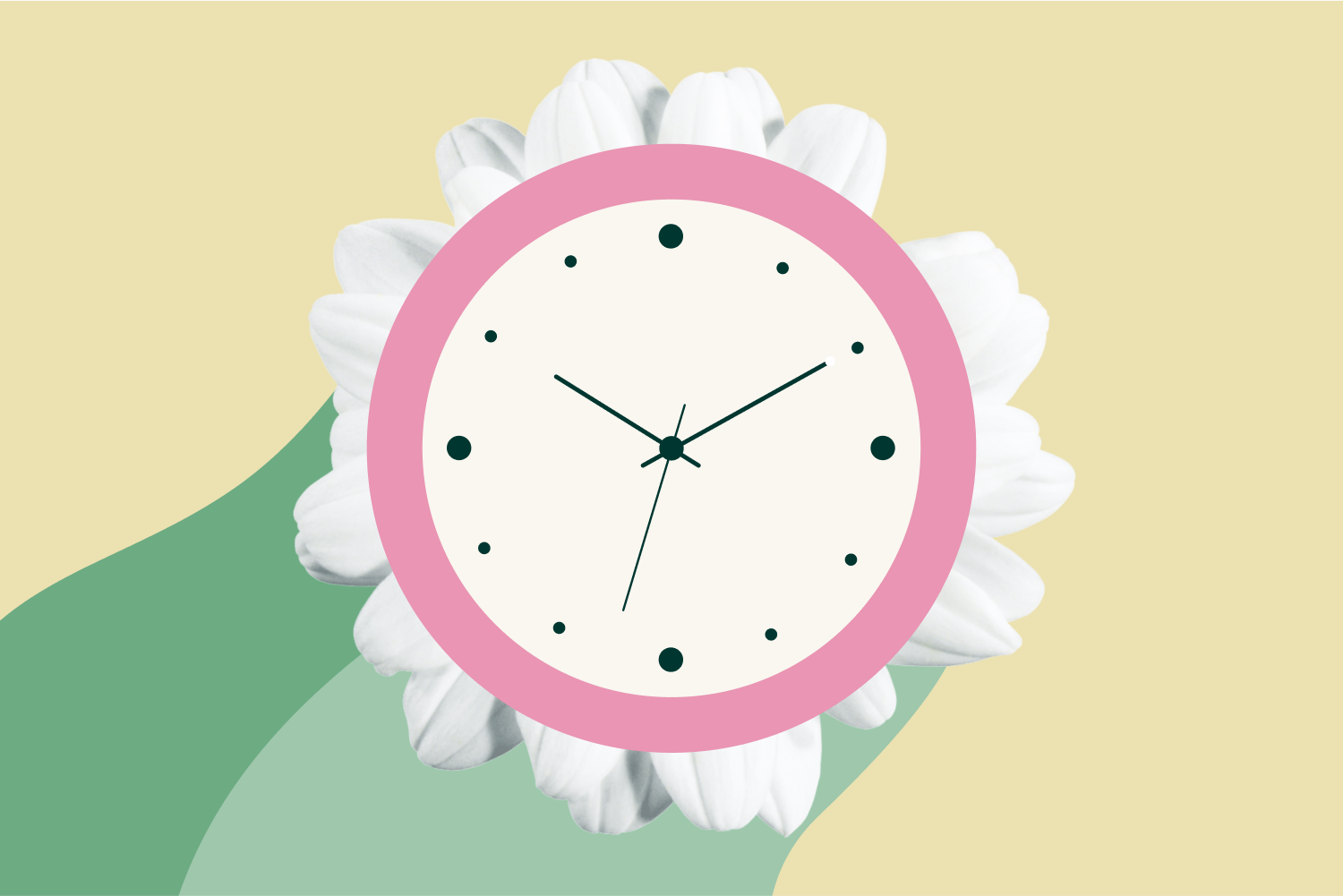LH Surge Before Your Period – Why Does This Happen?
If you are trying to conceive, you probably already know that testing for luteinizing hormone (LH) is helpful for predicting your fertile window and ovulation. And because ovulation typically occurs midway through your cycle, you’ve probably only ever tested for LH during the first half of your cycle – i.e. the follicular phase.

But what happens if you continue to test for LH after ovulation? You may assume that LH simply returns back to its baseline level. However, you may be surprised to learn that it’s actually common for some women to experience additional peaks in LH after their initial surge and before their upcoming period.
In this article, we’ll explore how common it is to have an LH surge before your period, the potential causes of this phenomenon, and what “normal” LH levels look like throughout your cycle. We’ll follow this up by answering some of your most frequently asked questions about LH. Let’s get started!
How Common is an LH Surge Before Your Period?
Experiencing a surge in LH before your period is more common than you may think. In fact, one research study from the American Society of Reproductive Medicine found that over the course of 281 cycles among 107 women, 33% of cycles had a double peak of LH, another 8% of cycles had multiple peaks of LH, and 11% of cycles had LH levels that plateaued – meaning that LH levels continued to stay elevated after the initial surge.
Although nearly half of cycles (48%) only had a single peak, this study is a good reminder that LH surge patterns vary greatly among women.

What Causes an LH Surge Before Your Period?
There are a few explanations for why LH may remain elevated or peak again before your period. For example, when progesterone drops dramatically at the end of your luteal phase, it is possible for this drop to trigger a slight increase in LH. It’s also possible to see a rise in LH if implantation occurs, as implantation can cause your overall hormone levels to fluctuate.
Additionally, if your baseline LH levels are naturally higher than average, it is possible for any slight fluctuation to cause an LH test to yield a positive or higher than average result – leading you to believe that your LH levels are surging a second time.
Can You Have an LH Surge Before Your Period and Still Be Pregnant?
Yes. It is still possible to be pregnant even if tests show your LH levels are surging. This is because LH can have a cross-reaction with the key pregnancy hormone, human chorionic gonadotropin (hCG), during implantation. So try not to worry if your LH levels appear to be surging or higher than their baseline levels ahead of your expected period.
What are LH Levels Throughout Your Cycle?
Individual LH levels can vary dramatically among women. However, there are general LH thresholds that are considered “normal”. Here’s a brief look at what you can expect your LH levels to be when they are at their lowest, highest, and baseline levels.
For the purposes of this article, LH ranges from the Mayo Clinic Laboratories were used. However, please note that ranges may vary among individual laboratories.
Baseline
Baseline LH levels typically range between 0.7 to 14.6 IU/L. To break that down even further, it is common to see LH measure between 1.9 IU/L to 14.6 IU/L during the first half of the cycle (the follicular phase) and 0.7 to 12.9 IU/L during the second half of your cycle (the luteal phase).
Lowest
In women with a regular menstrual cycle, LH levels tend to be at their lowest during the luteal phase, typically measuring between 0.7 to 12.9 IU/L. However, in women who are pregnant, LH levels are generally much lower and can be as low as <1.5 IU/L.
Highest
LH levels are at their highest when they are surging, which occurs approximately 24-36 hours before ovulation. During this time, they can measure as low as 12.2 IU/L to as high as 118.0 IU/L.
LH is also higher than the baseline in women who are experiencing menopause, ranging anywhere from 5.3 to 65.4 IU/L in menopausal women.
Can You Have a Double LH Surge?
Yes. It is possible for LH levels to peak twice in one cycle. This is known as a ‘double LH surge’, and research suggests that it occurs in an estimated 33% of cycles.
It’s important to note that just because LH levels surge twice, that doesn’t mean ovulation occurred twice. Instead, a double LH surge indicates that LH levels were not high enough in the first surge to trigger ovulation – so the body produces a second LH surge to ensure ovulation occurs.
While double LH surges are considered normal, they may be a sign of an underlying hormone imbalance. They can also cause confusion if you are tracking ovulation with an ovulation predictor kit (OPK). If you suspect that you have multiple LH peaks in a cycle, it’s worth tracking your numerical LH levels with a hormone monitoring system like Mira. You’ll not only be able to see your unique hormone curves in real time, but you can also export your charts and send them to your doctor for further assessment.
PCOS and LH Surges
PCOS (polycystic ovary syndrome) is a hormonal condition that can lead to irregular periods, cystic ovaries, and chronic lack of ovulation. Individuals with PCOS are more likely to experience double and even multiple LH peaks in a cycle. Their baseline LH level also tends to be higher than average, which makes it difficult for an LH surge to occur and induce ovulation.
Traditional OPKs are not a suitable tool for identifying LH surges and ovulation with PCOS. Instead, direct hormone monitoring with a tool like Mira alongside basal body temperature (BBT) and cervical mucus tracking can provide individuals with a clearer picture of what’s going on inside the body and when ovulation is actually occurring.
Frequently Asked Questions
Are there any symptoms of an LH surge?
Although rare, it is still possible to experience some physical symptoms related to your LH surge prior to ovulation. For example, some women may experience any of the following:
– Slight twinge or pain in the ovaries, also called “mittleschmerz”
– Breast pain or tenderness
– Slight bleeding or spotting
– Increase in cervical mucus that may be more slippery than normal
– Increase in basal body temperature
How long does LH surge last?
The average LH surge typically lasts between 24-36 hours. However, this can vary depending on each individual, and it can even vary from cycle to cycle.
What are the best ways to test an LH surge?
There are several different ways that you can track and test for your LH surge. This includes:
Keeping track of your individual cycle and physical symptoms.
Using OPK’s – such as Clearblue Digital Ovulation Test or First Response Easy Read Ovulation Test
Using a digital hormone monitoring system – such as Mira
Having your blood tested at your doctor’s office
The “best” testing method will depend on your individual situation and your pregnancy goals. For example, simply keeping track of your cycle and physical symptoms may not be the most efficient method if you are tracking LH to conceive as quickly as possible. Instead, OPK’s or full hormone tracking systems, like Mira, will make it much easier for you to monitor your LH levels and accurately predict your LH surge.
For those struggling to become pregnant, or those experiencing symptoms of hormonal conditions like polycystic ovarian syndrome (PCOS) or endometriosis, it’s a good idea to have your hormones tested at your doctor’s office with a blood test. Your doctor can then help you explore potential solutions that work for you and your body.
Utilizing a mix of methods – such as monitoring hormone levels with Mira while also keeping a journal of your physical symptoms – is the most thorough way to not only keep track of your hormones but also stay in tune with your body as well.
How should you prepare for an LH test?
To prepare for a blood LH test at your doctor’s office, simply follow their instructions in preparation for your test; making sure to inform your doctor of any medications you’re taking and attending your appointment on the right day and time.
To prepare for a urine LH test at home, preparation will depend on the brand of test you are taking. With Mira, we recommend testing for LH every day, beginning after your period. We also recommend using first-morning urine for the most accurate results.
If you have any other questions about testing with Mira, check out A Complete Guide to Testing with Mira Fertility.
How often should you test for your LH surge?
To test for your LH surge, you should aim to test for LH daily starting around 5-7 days before your estimated date of ovulation. If you’re unsure about when you may ovulate, it’s a good idea to start testing early on in your cycle, such as the day after your period ends, and not later than the 6th day of your cycle. This will ensure that you will not miss your LH surge.
Once a rise in LH has been detected, this signals that ovulation is likely to occur within the next 24-36 hours. If you are trying to conceive, you should aim to have sex with your partner during this window of time. After ovulation is complete, it is no longer necessary to continue testing for LH during your current cycle.
Are there any risks involved with taking an LH test?
Blood testing may cause moderate pain during testing and bruising after testing. There is no pain or risks associated with urine testing.
Mira’s Editorial Process
All content produced by Mira meets stringent editorial standards, ensuring excellence and accuracy in language and medical precision. Every piece undergoes thorough fact-checking and review by qualified professionals. Check out our full editorial process to learn more.










